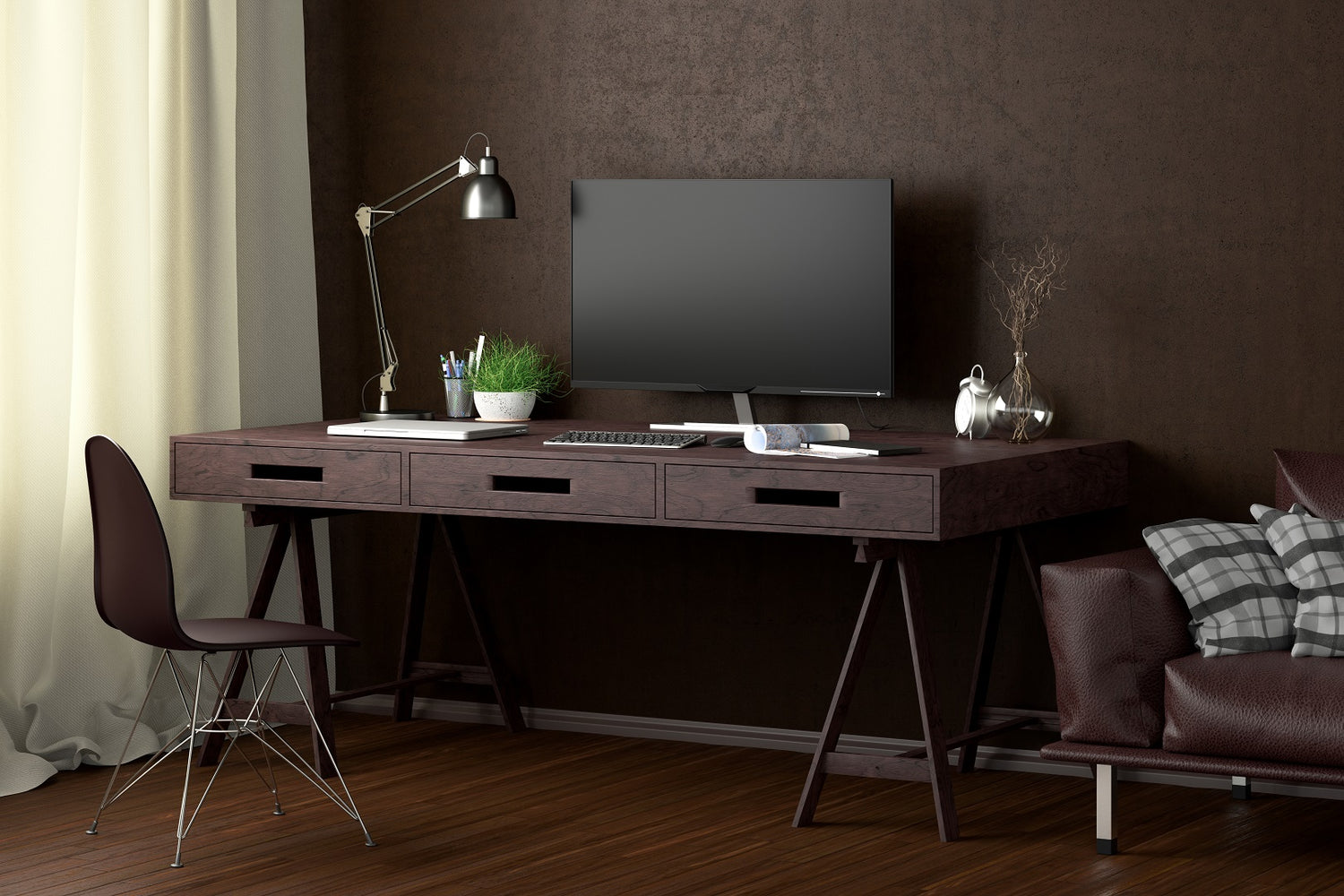The right home office can make you more productive, comfortable, and dedicated to working successfully from home. However, the location of the home office is just as important as the furniture and equipment you use.
The location of an office within the home affects the possibility of interruptions, noise distractions, and having enough light to work during the day and even at night.
Read on to explore tips on how to set up a home office in the right location of the house.
Prioritize the needs of a home office

Just like when making a list before viewing potential new homes, it is important to make a list of what you need in a workspace before designing a home office.
Prioritize needs such as a desk, a computer, some storage, a printer, and other critical equipment you may need for your workflow.
You can include additional wants such as natural lighting, live plants, and artwork which make the working environment more engaging and enjoyable.
Prioritizing your needs will allow you to visualize the space you will need to work. For instance, a graphic designer may need enough desk space for multiple computer screens and a large table for sketching.
Choose a dedicated area of the home

Once you have a detailed list of everything you need for a productive home office, you will have a good idea of how much space will be needed. From this information, you can select an area of the home that works best.
Some homeowners may have a built-in home office space and a guest room available. However, not everyone will have an entire room that can be converted into a home office.
If you need to set up a home office within a limited space, consider a single desk or a designated nook in a living area or a bedroom which can work well in a pinch.
Ideally, a home office should be in an area of the home with some privacy and separation from living spaces. This will help you stay focused while limiting distractions. This is particularly important if you share the home with a partner, children, and roommates.
Consider a spare room with a door if you are likely to be on the phone frequently so that you reduce noise to and from the rest of the house.
If you are going to be meeting with clients in your home office, experts advise choosing a room near the front entrance of the house.
However, you might need a dedicated studio separate from the rest of the home if you need space to spread out design documents and tech equipment.
Consider the availability of fast and reliable internet

The bandwidth of the internet in the home is an important factor that affects the experience of working from home. Experts state that the best connections are wired ethernet especially if you do bandwidth-intensive work.
Wi-Fi is fine for basic office work and ideal for those who cannot wire their devices to internet routers. However, you may want to check if you have access to a decent Wi-Fi signal in your home office.
If your Wi-Fi router is far from your home office, consider a wireless signal extender or a second router that you can wire into your office. Such a change is likely to make your working experience more seamless and enjoyable.
Consider who else uses the space
As you set up the home office, consider who else will likely use it so that you pick the space and furniture accordingly. Are the kids going to use the space for homework? Is your partner going to work from home as well?
If this is the case, consider a partner desk setup where multiple people can work at the same time.
Consider whether clients are likely to drop by and invest in some seating and table space for clients as well.
Add some privacy

If you have a dedicated room to use as a home office, it will likely have walls that span the height from the ceiling to the floor and solid doors that close. This makes privacy a lot easier to come by.
However, if your office is tucked away in the corner of another room, it might be challenging to separate work from home.
If this is the case, consider a privacy divider for your home office setup. There are traditional dividers that sit on the floor or tall curtains that hang from a ceiling or a rod.
Curtains are lightweight and generally inexpensive as a way of getting some privacy in your home office. A curtain is also beneficial because you can choose a subtle design that blends well into the rest of the décor.
Conclusion
It is important to create an effective and ideally located workspace in a home, and this can be challenging. Homeowners need to resist the urge to simply pull up a chair at a dining table.
Instead, one should invest in a long-term working-from-home environment that supports your productivity and overall well-being.
Your home office should ideally be in a quiet area of the home with little traffic and a lot of privacy. This is important if you share the house with other people.
Experts advise using a spare room with a lockable door so that the rest of the house is isolated from any noise generated when you work for long hours.
Ensure that your home office space can accommodate a table or desk, an ergonomic chair, fast internet connectivity, sufficient lighting solutions, a cabinet for storage and preferred décor that personalizes the space.






Leave a comment
This site is protected by hCaptcha and the hCaptcha Privacy Policy and Terms of Service apply.